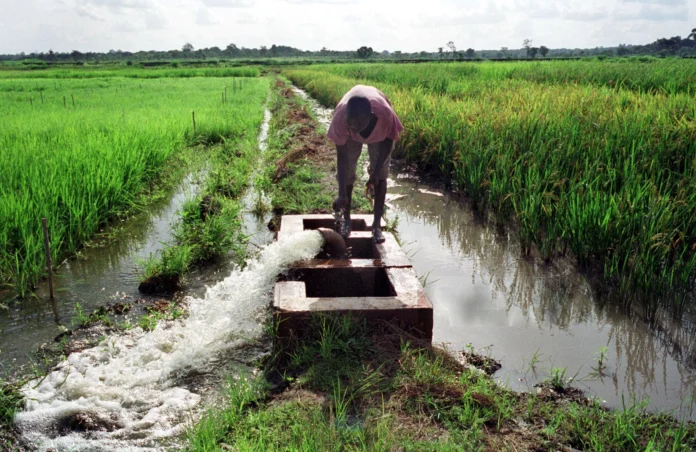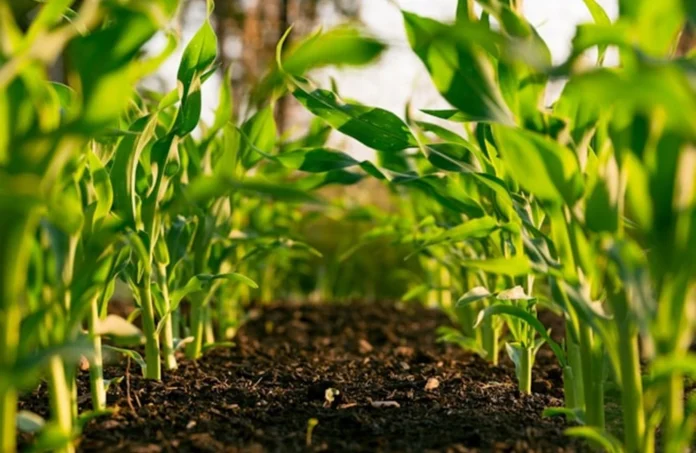Arabfields, Newsroom — In a bid to overcome persistent hurdles in productivity and market access, the government of São Tomé and Príncipe has turned to digital technology, launching a new platform designed to bridge gaps in the agricultural sector and foster economic growth.
São Tomé and Príncipe, a small island nation in the Gulf of Guinea with a population of around 219,000, has long relied on agriculture as the backbone of its economy. The sector employs nearly 45 percent of the workforce and contributes approximately 11 percent to the gross domestic product. Primary commodities, particularly cocoa beans, dominate exports, accounting for a significant portion of the country’s merchandise trade. However, this dependence exposes the economy to vulnerabilities, including fluctuating global prices, climate-related risks such as floods and rising sea levels, and geographic isolation that limits access to larger markets. Despite graduating from least developed country status in late 2024, the nation continues to grapple with slow GDP growth, averaging under 2 percent in recent years, underscoring the need for structural reforms to diversify and strengthen its economic base.
Agriculture in São Tomé and Príncipe faces a multitude of structural challenges that hinder its full potential. Farmers, many of whom are smallholders operating on limited land, struggle with insufficient information on market prices and demand, leading to inefficiencies in production and sales. Weak distribution networks exacerbate these issues, often resulting in high post-harvest losses, estimated to affect a substantial portion of output due to inadequate storage, transportation, and processing facilities. Pest outbreaks and low commodity prices further compound problems, driving rural-urban migration and depleting the agricultural labor force. Additionally, gender disparities persist, with women, who make up over half of the agricultural workforce, facing barriers to resources like mobile technology and training opportunities. These factors contribute to reduced productivity and stagnant incomes for rural communities, perpetuating cycles of poverty in an economy where rural populations constitute about 66 percent of the total.
Against this backdrop, the government, in collaboration with the United Nations Food and Agriculture Organization, unveiled a groundbreaking digital platform on October 24, 2025. The initiative, developed by the Directorate of Entrepreneurship at the executive’s behest, seeks to streamline the flow of agricultural products from farms to markets. By connecting producers directly with buyers, the platform aims to minimize post-harvest losses, enhance market access, and foster closer relationships between farmers and consumers. Its design emphasizes simplicity and accessibility, leveraging widespread digital habits among local farmers. Many already own smartphones and use applications like WhatsApp for communication, making the platform a natural extension of existing practices rather than a disruptive overhaul.
The platform functions as a digital marketplace, allowing farmers to list their products, share real-time information on availability and quality, and negotiate deals with potential buyers. Features include tools for tracking shipments, providing price alerts based on market trends, and offering basic advisory services on best practices to reduce waste. For instance, users can receive notifications about optimal harvest times or storage techniques tailored to local crops like cocoa, coffee, bananas, and palm oil. Offline capabilities are planned to accommodate areas with unreliable connectivity, ensuring that even farmers in remote rural districts can participate. This approach addresses key pain points, such as the lack of transparent pricing and inefficient supply chains, which have historically led to surplus produce spoiling before reaching consumers.
This launch is not an isolated effort but part of a comprehensive program to boost youth employability in agriculture. Recognizing that young people represent a vital demographic for innovation, the government has integrated the platform into initiatives that provide training in digital skills and entrepreneurship. Programs like youth empowerment schemes, which have already reached over 1,200 beneficiaries, focus on equipping young farmers with the tools to leverage technology for business growth. By targeting this group, the initiative aims to reverse migration trends, encourage agripreneurship, and inject fresh energy into the sector. Women are also prioritized, with efforts to close the gender gap in mobile ownership and digital literacy, where women currently lag behind men.
Economically, agriculture remains a cornerstone, generating nearly 80 percent of export revenues through commodities like cocoa. Yet, the sector’s competitiveness is undermined by outdated practices and limited diversification. The new platform positions itself as a catalyst for change, transforming untapped agricultural potential into concrete economic gains. By strengthening local value chains, it facilitates diversification into new markets, such as niche organic products or agro-tourism linkages. In the long run, enhanced traceability through digital records will build trust with international buyers, potentially opening doors to premium pricing and sustainable trade agreements. Improved incomes for farmers could ripple through the rural economy, supporting better education, health, and infrastructure in communities that have long been underserved.
The move aligns with broader trends in digital agriculture across sub-Saharan Africa, where similar initiatives have demonstrated tangible benefits. In regions facing comparable challenges, mobile applications and SMS-based services have improved productivity by providing timely weather forecasts, pest alerts, and market intelligence. For example, pilots involving drone technology for crop monitoring have helped optimize fertilizer use and detect issues early, reducing losses and boosting yields. While adoption remains in early stages, with less than 5 percent of smallholders using advanced digital services in many areas, successes in data collection and advisory platforms have enhanced resilience to climate shocks and economic volatility. In small island nations like São Tomé and Príncipe, where land and resources are constrained, such tools are particularly valuable for maximizing efficiency without expanding physical footprints.
Government strategies, including the National Development Plan for 2020-2030 and the Digital Transformation Strategy, underscore a commitment to this path. These frameworks aim to expand broadband coverage, promote digital inclusion, and align ICT policies with agricultural needs. Ongoing projects, such as rural connectivity expansions funded through international partnerships, seek to address infrastructure gaps, with goals to deploy solar-powered community hubs and extend fiber-optic networks. Affordability remains a hurdle, with mobile data costs representing a significant portion of monthly income for many, but subsidies for low-cost devices and offline apps are under consideration to broaden access.
Looking ahead, the platform’s success will hinge on overcoming persistent barriers like unreliable electricity, where rural access stands at about 33 percent, and limited 4G coverage, currently at 15 percent. Recommendations from experts emphasize the need for a dedicated national digital agriculture strategy by 2025, alongside investments in training and public-private partnerships. If scaled effectively, this digitization could lead to 30 percent adoption of digital services among smallholders by 2030, significantly elevating productivity and incomes.
Ultimately, São Tomé and Príncipe’s embrace of digital innovation signals a forward-thinking approach to modernization. By harnessing technology to empower its farmers, the nation not only addresses immediate challenges but also lays the groundwork for a more resilient and prosperous rural economy, ensuring that agriculture continues to drive sustainable development in the archipelago.












